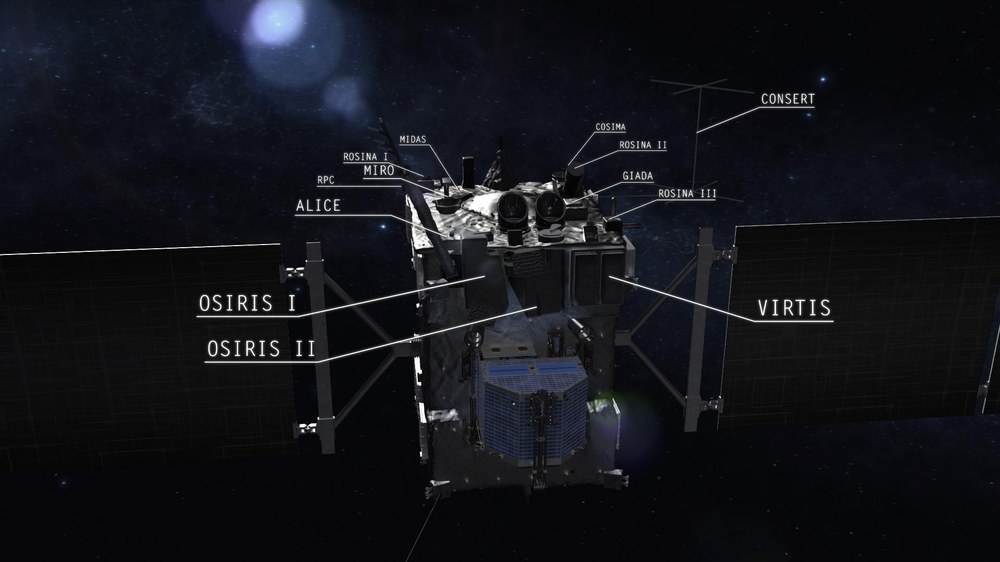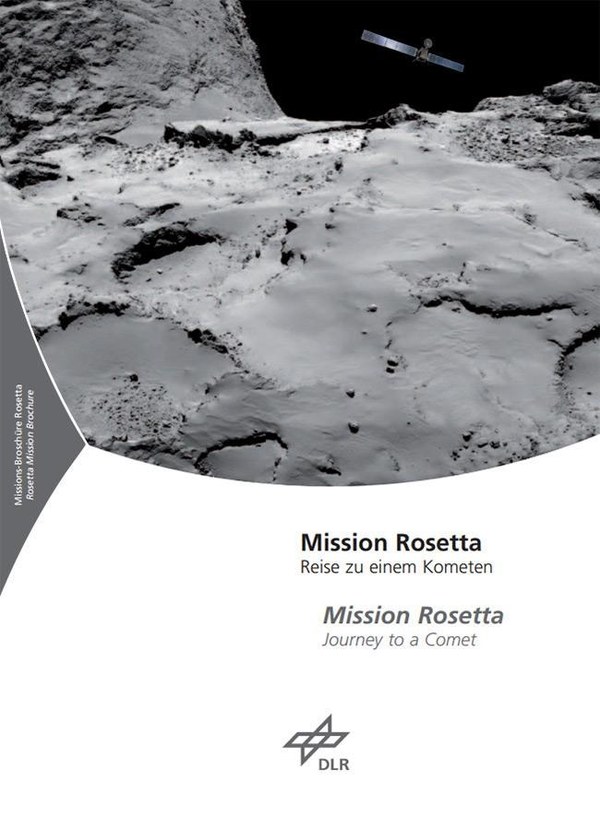DLR involvement

ESA–C. Carreau/ATG medialab.


ESA/ATG medialab.
Germany has played a key role in the Rosetta mission, contributing to the construction of instruments and also industrial contributions to the orbiter, which itself was constructed by the Prime Contractor EADS Astrium (now Airbus) in Friedrichshafen. The Philae lander was developed and built by an international consortium under the leadership of the German Aerospace Center (DLR).
DLR contributed three of the 10 experiments on the Philae lander: the ROLIS camera used during the landing phase; the SESAME experiment for seismic analysis of the comet core; and the MUPUS system, designed to measure the thermal and material properties of the comet.
The Max Planck Society was the most important DLR partner in building the landing module. Among other things, the Institute for Solar System Research developed the landing gear, the ejection mechanism and the mechanical analysis instrument COSAC. The Max Planck Institute for Extraterrestrial Physics in Garching built the harpoons to anchor the craft to the comet, while the Max Planck Institute for Chemistry in Mainz contributed a material analysis device (APXS). Additionally, the universities of Munster, Mainz and Braunschweig in Germany were involved alongside international partners.
The European Space Operations Centre (ESOC) in Darmstadt controls the Rosetta orbiter, while MUSC (Microgravity User Support Center) in Cologne monitors the Philae landing craft. As soon as the launch was complete, MUSC set about conducting tests and calibrating the payload. These tests were repeated at regular intervals to test the module's operational readiness before Rosetta and Philae went into 'hibernation'.
DLR also contributed to several instruments on board the orbiter, delivering electronic components and software for the spectrometer VIRTIS, used to determine the chemical composition of the comet core surface and the coma as well as to determine the surface temperature. Furthermore, the DLR Institute of Planetary Research in Berlin is involved in the scientific teams of the instruments OSIRIS, RPC and ROSINA.

